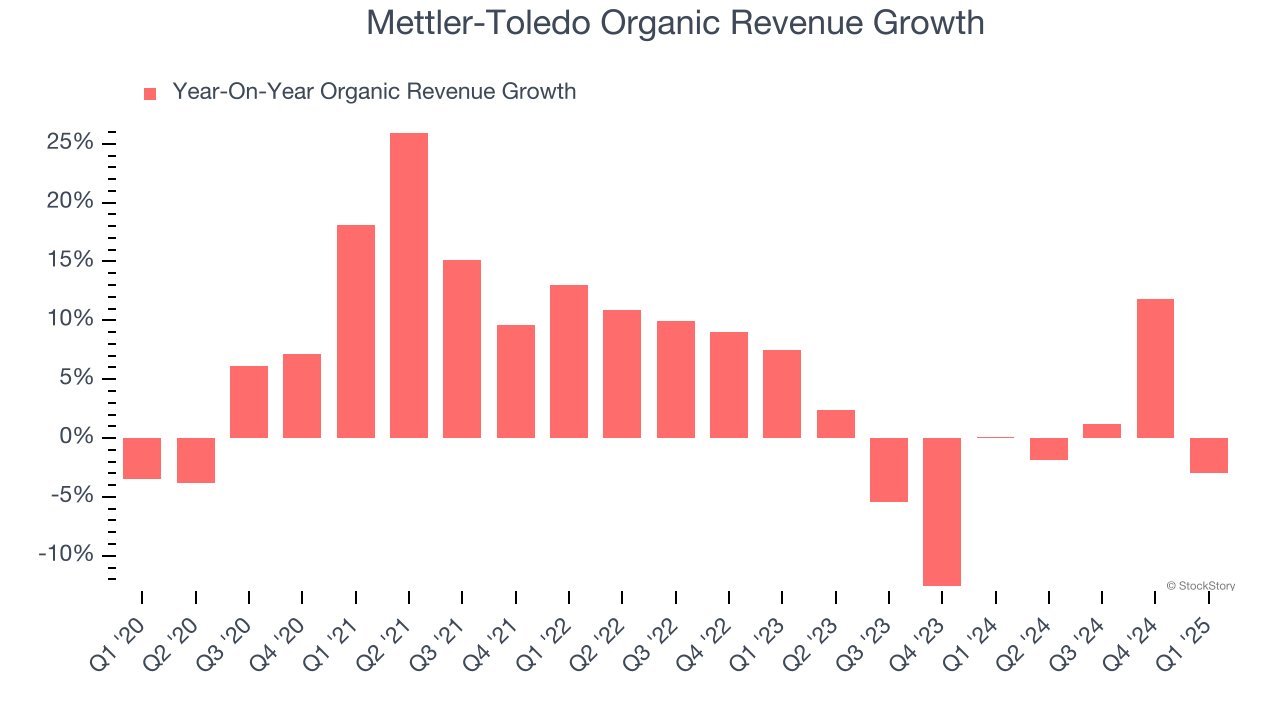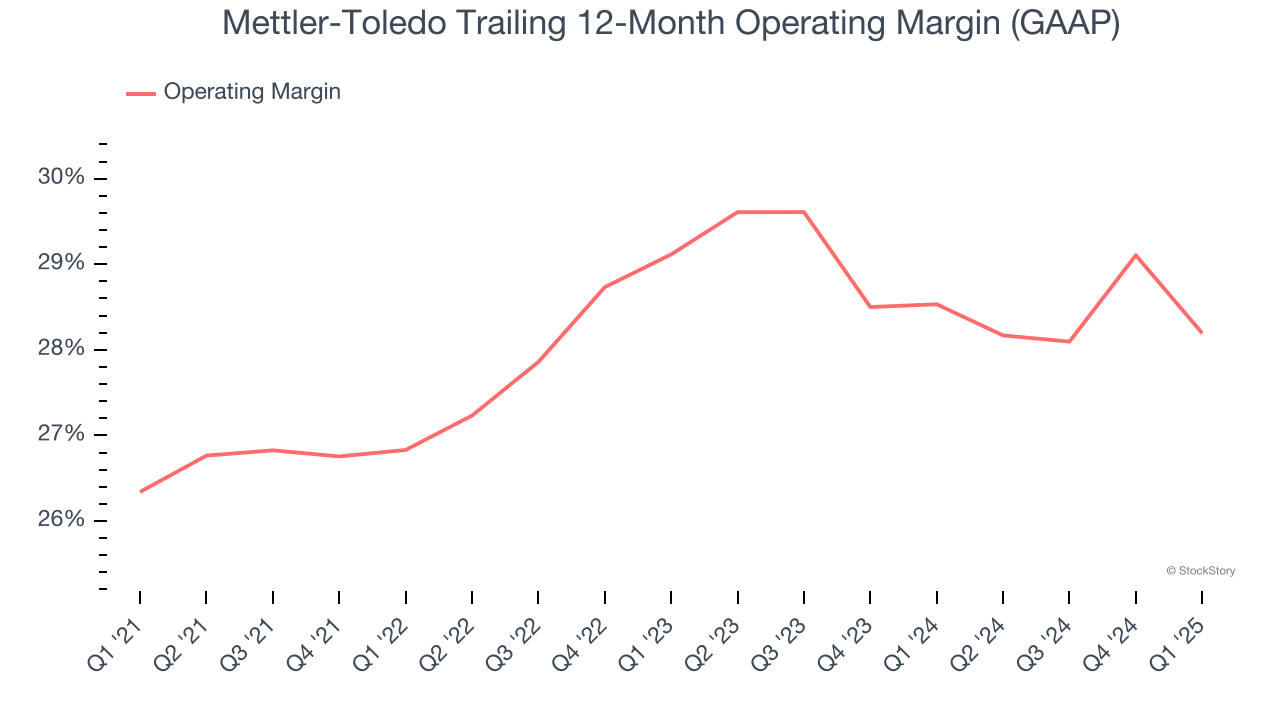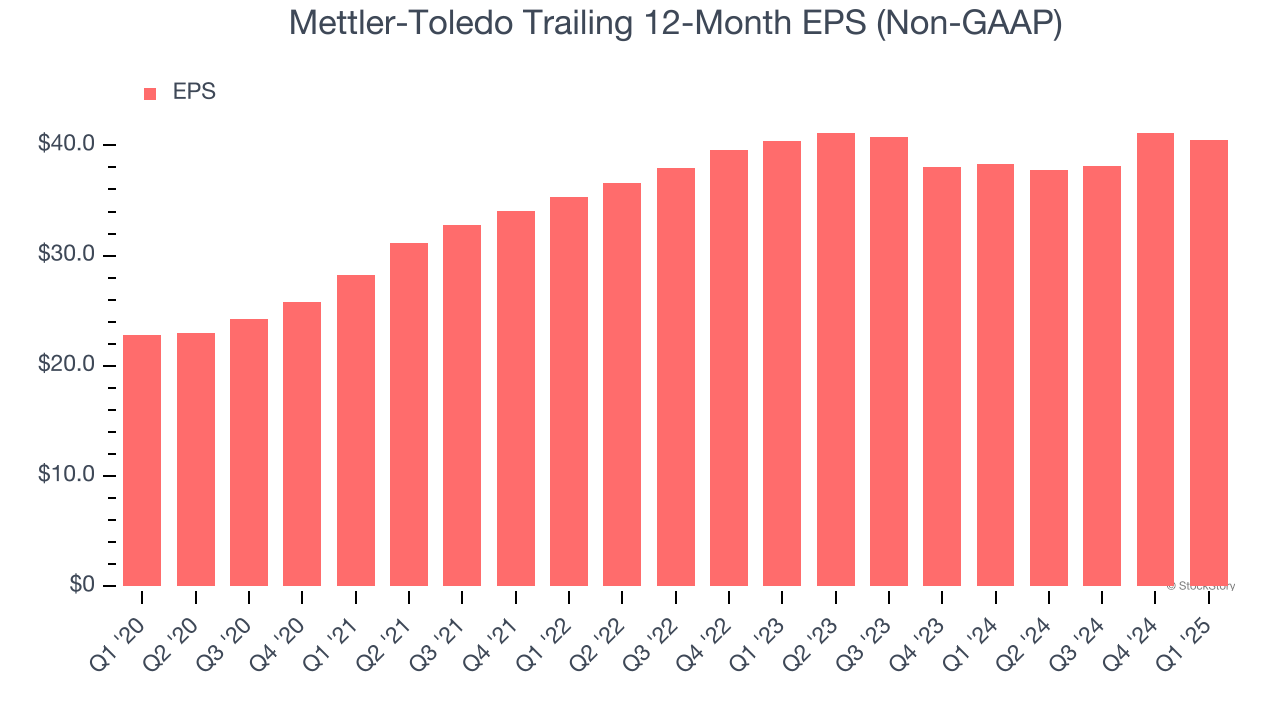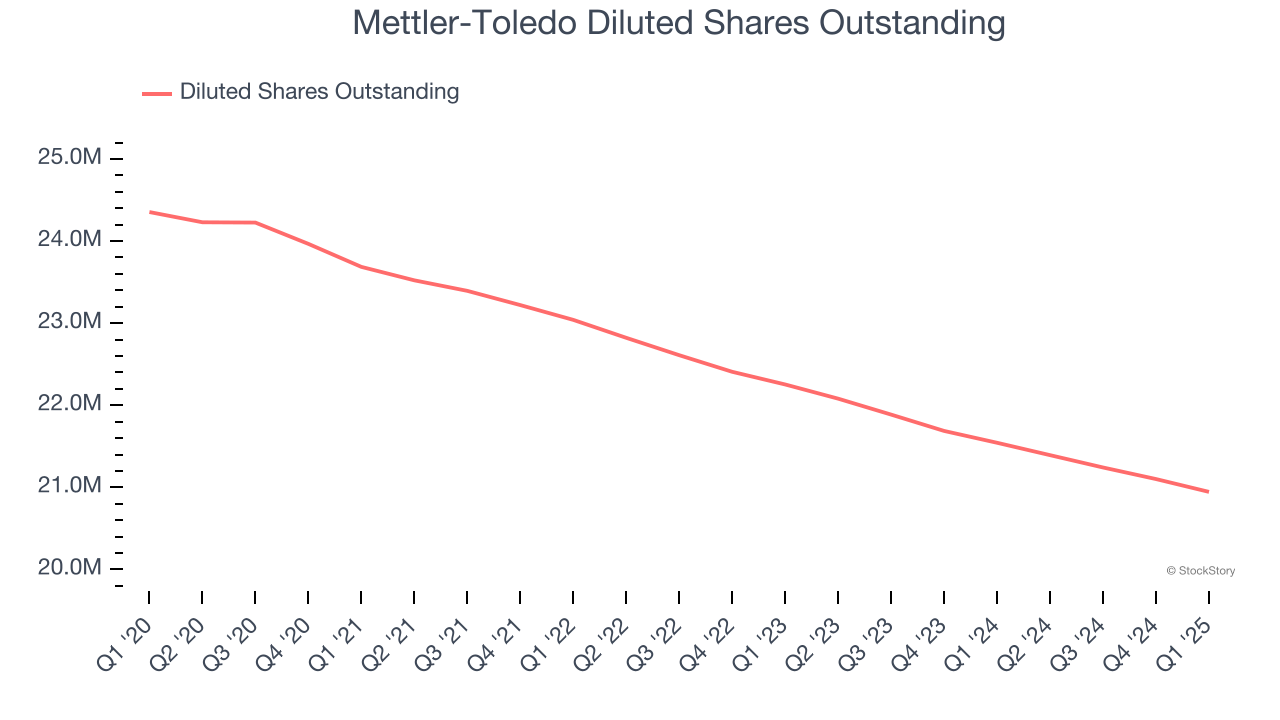
Precision measurement company Mettler-Toledo (NYSE:MTD) reported revenue ahead of Wall Street’s expectations in Q1 CY2025, but sales fell by 4.6% year on year to $883.7 million. Its non-GAAP profit of $8.19 per share was 3.9% above analysts’ consensus estimates.
Is now the time to buy Mettler-Toledo? Find out by accessing our full research report, it’s free.
Mettler-Toledo (MTD) Q1 CY2025 Highlights:
- Revenue: $883.7 million vs analyst estimates of $875.1 million (4.6% year-on-year decline, 1% beat)
- Adjusted EPS: $8.19 vs analyst estimates of $7.88 (3.9% beat)
- Management lowered its full-year Adjusted EPS guidance to $41.63 at the midpoint, a 2.5% decrease
- Operating Margin: 22.9%, down from 26.9% in the same quarter last year
- Free Cash Flow Margin: 20.1%, up from 18.6% in the same quarter last year
- Organic Revenue fell 3% year on year (0.1% in the same quarter last year)
- Market Capitalization: $22.31 billion
Patrick Kaltenbach, President and Chief Executive Officer, stated, “We had a good start to the year with solid growth in our Laboratory business, excluding the recovery of delayed shipments in the first quarter of 2024. Strong execution of our margin expansion strategies led to better-than-expected earnings.”
Company Overview
With roots dating back to the precision balance innovations of Swiss engineer Erhard Mettler, Mettler-Toledo (NYSE:MTD) manufactures precision weighing instruments, analytical equipment, and product inspection systems used in laboratories, industrial settings, and food retail.
Sales Growth
Examining a company’s long-term performance can provide clues about its quality. Even a bad business can shine for one or two quarters, but a top-tier one grows for years. Regrettably, Mettler-Toledo’s sales grew at a mediocre 5.2% compounded annual growth rate over the last five years. This fell short of our benchmark for the healthcare sector and is a tough starting point for our analysis.

We at StockStory place the most emphasis on long-term growth, but within healthcare, a half-decade historical view may miss recent innovations or disruptive industry trends. Mettler-Toledo’s performance shows it grew in the past but relinquished its gains over the last two years, as its revenue fell by 1.5% annually. 
We can better understand the company’s sales dynamics by analyzing its organic revenue, which strips out one-time events like acquisitions and currency fluctuations that don’t accurately reflect its fundamentals. Over the last two years, Mettler-Toledo’s organic revenue was flat. Because this number aligns with its normal revenue growth, we can see the company’s core operations (not acquisitions and divestitures) drove most of its results. 
This quarter, Mettler-Toledo’s revenue fell by 4.6% year on year to $883.7 million but beat Wall Street’s estimates by 1%.
Looking ahead, sell-side analysts expect revenue to grow 3.2% over the next 12 months. Although this projection implies its newer products and services will catalyze better top-line performance, it is still below the sector average.
Unless you’ve been living under a rock, it should be obvious by now that generative AI is going to have a huge impact on how large corporations do business. While Nvidia and AMD are trading close to all-time highs, we prefer a lesser-known (but still profitable) stock benefiting from the rise of AI. Click here to access our free report one of our favorites growth stories.
Operating Margin
Operating margin is one of the best measures of profitability because it tells us how much money a company takes home after subtracting all core expenses, like marketing and R&D.
Mettler-Toledo has been an efficient company over the last five years. It was one of the more profitable businesses in the healthcare sector, boasting an average operating margin of 27.9%.
Looking at the trend in its profitability, Mettler-Toledo’s operating margin rose by 1.9 percentage points over the last five years, as its sales growth gave it operating leverage. This performance was mostly driven by its past improvements as the company’s margin was relatively unchanged on two-year basis.

This quarter, Mettler-Toledo generated an operating profit margin of 22.9%, down 4.1 percentage points year on year. This contraction shows it was less efficient because its expenses increased relative to its revenue.
Earnings Per Share
We track the long-term change in earnings per share (EPS) for the same reason as long-term revenue growth. Compared to revenue, however, EPS highlights whether a company’s growth is profitable.
Mettler-Toledo’s EPS grew at a spectacular 12.1% compounded annual growth rate over the last five years, higher than its 5.2% annualized revenue growth. This tells us the company became more profitable on a per-share basis as it expanded.

Diving into Mettler-Toledo’s quality of earnings can give us a better understanding of its performance. As we mentioned earlier, Mettler-Toledo’s operating margin declined this quarter but expanded by 1.9 percentage points over the last five years. Its share count also shrank by 14%, and these factors together are positive signs for shareholders because improving profitability and share buybacks turbocharge EPS growth relative to revenue growth. 
In Q1, Mettler-Toledo reported EPS at $8.19, down from $8.89 in the same quarter last year. Despite falling year on year, this print beat analysts’ estimates by 3.9%. Over the next 12 months, Wall Street expects Mettler-Toledo’s full-year EPS of $40.46 to grow 7.6%.
Key Takeaways from Mettler-Toledo’s Q1 Results
It was good to see Mettler-Toledo narrowly top analysts’ revenue expectations this quarter. We were also happy its EPS outperformed. On the other hand, its full-year EPS guidance fell short of Wall Street’s estimates. Overall, this quarter could have been better. The stock remained flat at $1,050 immediately after reporting.
Mettler-Toledo may have had a tough quarter, but does that actually create an opportunity to invest right now? We think that the latest quarter is only one piece of the longer-term business quality puzzle. Quality, when combined with valuation, can help determine if the stock is a buy. We cover that in our actionable full research report which you can read here, it’s free.
